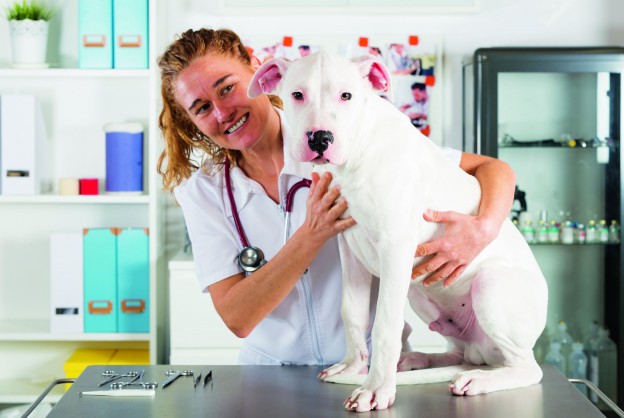
Wondering if pet insurance is a life saver or a bank account drainer? Mel Hearse investigates
When pet insurance first came out (and I’m about to show my age here), it was a solid no from my husband and me — there was pretty much one option on the table and a list of exclusions as long as my arm. We were also very much “fly by the seat of our pants” financial types, who, with the benefit of hindsight, had no idea just how many costs crop up with pets (the second dog we got a year later taught us the hard way). Fast-forward to the end of our first pup’s life — he got to 17 — and, thankfully, our approach to finances matured alongside him, and we were grateful to have insurance.
With the average cost of annual veterinary bills around the $450 mark for basic routine health care and emergency surgery anywhere from $2500 upwards, depending on injuries, Dr Cherlene Lee from My Vet Animal Hospital says insurance is worth having. “Veterinary treatments are more advanced than ever and the average pet insurance claim in Australia is between $200–$2600, with some accidents and emergencies being claimed for more than $25,000,” she says.
But what goes into making the right choice for you and your pet’s needs and budget? There is a range of variables to consider, which we will look at here.
Different types of pet insurance
There are three types of pet insurance and you can choose from accident only, accident and illness or comprehensive policies. As the name suggests, accident-only policies cover harm or injury caused by an accident, so anything from seeing a vet following a car accident to a snake bite in the backyard or bites sustained in a dog or cat fight. Do be warned, however, many policies won’t pay out if you didn’t take preventative measures — for example, your dog sustained injuries being flung about in the car and you didn’t have him fitted into a seat belt; nor does insurance typically pay for pre-existing conditions, such as old orthopaedic injuries flaring up.
Accident and illness policies cover the above in addition to sickness or disease diagnosed by a vet. Market research company CANSTAR reports your pooch should be covered for minor conditions such as ear infections, skin conditions and insect bites, through to more serious illnesses including cancer and hereditary conditions. Again, be aware insurance companies are unlikely to pay out for pre-existing conditions or diseases where there is a known vaccine that you haven’t used.
Last, if the opposite of least, comprehensive policies cover all of the above, alongside a range of routine care treatments. This may include behavioural therapy, desexing, dental care and vaccinations.
“Remember that every pet insurance company has it’s own definition for things such as routine care, ear and skin conditions,” Dr Cherlene says.
Age matters
Stage of life is a factor in choosing the right policy — your dog’s health needs obviously change over the course of his life. Ideally, you’ll get insurance when your dog is young — this prevents a pile of conditions from being excluded due to being considered pre-existing and pups also need a lot in the way of extras such as preventative vaccinations, desexing, health checks and microchipping, which are only covered by comprehensive policies.
After your pup’s first year, moving to accident and illness cover becomes safer if you’re looking to save some dollars, as the expensive “start-up” costs are over — and those your pooch still needs may work out cheaper to pay for than the cost of higher insurance premiums.
As your pet gets older, she is more likely to need to see a vet for treatment of arthritis, cancer and eye conditions, so an accident and illness or comprehensive policy is worthwhile — though be very cautious and ensure moving policies doesn’t mean the exclusion of pre-existing conditions kicks in. Also check the fine print and ask questions — some policies will not cover older pets or will make you pay a higher percentage of the vet bill for an older pet.
Watch the caps
As well as ensuring your policy covers what you want it to, you also need to check out the caps, or the total amount your insurance company will pay out per condition, per year (or life of the policy). Dr Cherlene points out if your policy has a sub limit on consultation fees of $300 per year, once you factor in the average consultation fee of $85, or a specialist consultation fee of around $250, you would easily hit your sub limit for the year pretty quickly. This means even though you have insurance, if your pet gets sick and needs to see a vet again in the same year for another condition, you will not be covered.
What else should you be wary of? Dr Cherlene says you should pay close attention to the exclusions and what they mean. For example, some pet insurance companies will have certain exclusions for specific breeds, meaning they might be generally covered by the policy, with the exception of certain conditions related to the breed. “They could be excluded for a condition that they are born with, or inherited conditions — for example, some flat-nose dogs are not eligible for any corrective surgeries for their breathing issues,” she explains.
You should also ensure all the routine care inclusions match your expectations — just because you consider dental procedures or vaccinations routine doesn’t necessarily mean your insurer agrees, so read the fine print and be sure. Also note any waiting periods and what percentage of the claim is covered or if there is an excess fee (this is the contribution you are required to pay towards a claim you make).




